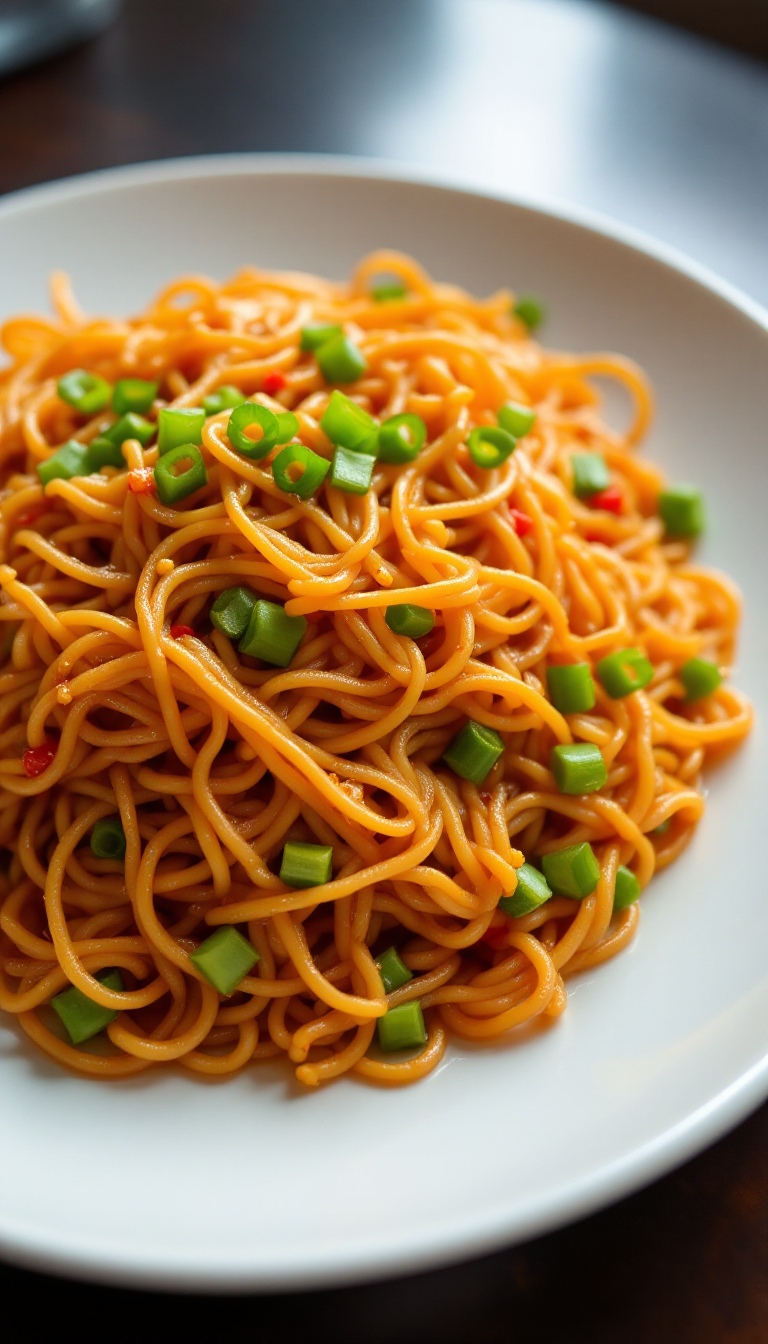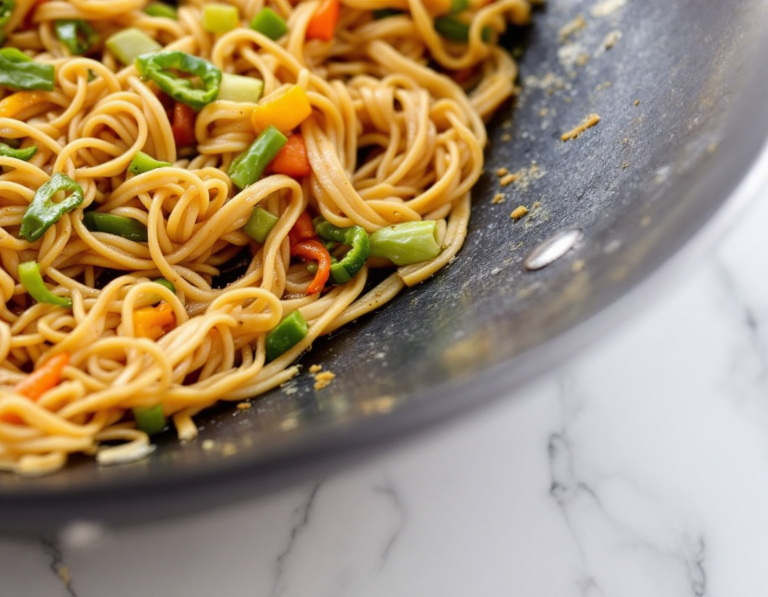
Ah, Chow Mein. Just hearing those words brings to mind the sizzle of veggies in the pan and the aroma of soy sauce wafting through the kitchen—kind of like a warm hug in noodle form. If you’re anything like me, you’ve probably found yourself craving that Panda Express goodness more often than you’d like to admit, especially on those nights when cooking feels like a Herculean task.
Well, guess what? This easy copycat recipe is about to change your noodle game forever, with a few delightful shortcuts—because who has time for all that chopping anyway?
Steps
- Begin by preparing the chow mein sauce. In a small bowl, mix together soy sauce, brown sugar, minced garlic, grated ginger, and a pinch of black pepper. Set this mixture aside for later use.
- Next, prepare your noodles. Remove them from their packaging and discard any included seasoning packets. Rinse the noodles thoroughly, drain them well, and set them aside.
- Heat vegetable oil in a large wok or skillet over medium heat. Add chopped celery and sliced onion, sautéing for 1-2 minutes until the onion begins to soften and turn translucent.
- Incorporate the chopped cabbage into the wok and continue to sauté for another minute. This will allow the cabbage to slightly soften while retaining some crunch.
- Add the prepared noodles and chow mein sauce to the vegetable mixture in the wok. Stir-fry everything over medium-high heat for 2-3 minutes, ensuring the noodles are heated through and evenly coated in the sauce.
- If desired, you can enhance the flavor by adding a small amount of sesame oil to the vegetable oil. However, be cautious not to use too much, as it can easily overpower the dish.

Ingredients
- 3 (5.6 ounce) packages Yakisoba noodles or Chinese Egg Noodles
- ¼ cup soy sauce
- 1 tablespoon brown sugar
- 2 cloves garlic, minced
- 1 teaspoon grated fresh ginger
- Ground black pepper, to taste
- 2-3 tablespoons vegetable oil
- ? cup celery, chopped diagonally
- 1 medium onion, thinly sliced
- 2 cups chopped cabbage
Nutritional Values
Calories: 1014kcal | Carbohydrates: 156g | Protein: 30g | Fat: 15g | Saturated Fat: 12g | Sodium: 3336mg | Potassium: 1050mg | Fiber: 12g | Sugar: 30g | Vitamin A: 438IU | Vitamin C: 66mg | Calcium: 162mg | Iron: 6mg
FAQ
- Can I use a different type of noodle for this recipe?
- Absolutely! While Yakisoba noodles are preferred for their texture, you can also use lo mein, ramen, or even spaghetti in a pinch. Just ensure to stir-fry them to achieve the classic chow mein character.
- What are some ways to enhance the flavor of the chow mein?
- You can boost the flavor by adding a small amount of sesame oil to the vegetable oil during cooking. Additionally, incorporating a touch of oyster sauce or a splash of Chinese cooking wine can elevate the taste. Feel free to experiment with extra vegetables like carrots, pea pods, or broccoli for added crunch and color.
- How do I store and reheat leftover chow mein?
- Store any leftovers in an airtight container in the refrigerator for up to 4-5 days. When reheating, add a splash of water or extra sauce to keep the dish moist. You can warm it up on the stovetop, in the microwave, or in the oven. If using the oven, cover the dish with foil and bake at 350°F for 20-30 minutes, keeping an eye on it to avoid overcooking.
- What is the difference between chow mein and lo mein?
- The primary difference lies in their preparation. Chow mein noodles are parboiled and then stir-fried, resulting in a slightly crispy texture with minimal sauce. In contrast, lo mein noodles are boiled until soft and then tossed with more sauce, giving them a slurpable, spaghetti-like texture. Although Panda Express chow mein may seem like lo mein, its stir-fried texture confirms it’s chow mein.
- Can this recipe be adapted into a lo mein dish?
- Yes, you can easily adapt this chow mein recipe into a lo mein by boiling the noodles until soft and doubling the sauce. Toss the cooked noodles with the sauce and serve for a delicious lo mein experience.
Tips
- Avoid Overcooking the Noodles: Ensure the noodles are just heated through during stir-frying to prevent them from becoming too soft and breaking apart.
- Use the Right Pan: Opt for a large wok or deep non-stick pan to make stir-frying easier and more effective.
- Enhance Flavor with Sesame Oil: Consider adding a small amount of sesame oil to the vegetable oil for extra depth in flavor, but be cautious not to use too much, as it can quickly overpower the dish.
- Customize with Additional Veggies: Feel free to incorporate extra vegetables like carrots, broccoli, or pea pods for added crunch and color.
Equipment
- Wok or Large Non-Stick Pan: Essential for stir-frying the noodles and vegetables efficiently.
- Grater: For grating fresh ginger.
- Chef’s Knife: For chopping celery, onion, and cabbage.